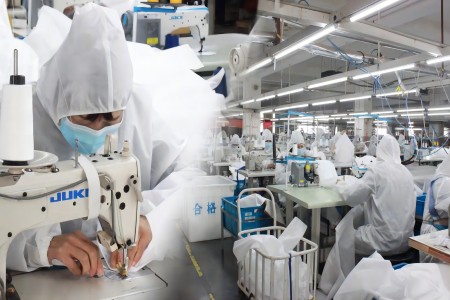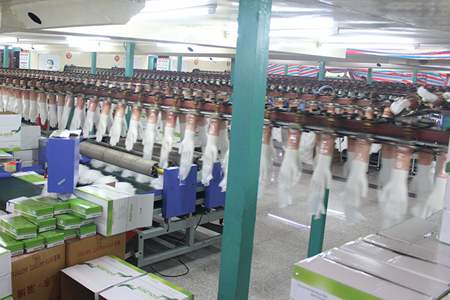2023/9/21

5 Features to Look for in Disposable Coveralls for Maximum Protection
When it comes to protecting oneself from hazardous materials or biological contaminants, disposable coveralls are a must-have. Disposable coveralls are garments that are designed to be worn once and then discarded. They are made from materials that are resistant to hazardous materials, and they are designed to provide excellent protection against harmful substances. In this article, we will discuss the top 5 features to look for in disposable coveralls to ensure maximum protection.
What are disposable coveralls?
Disposable coveralls are garments that are designed to be worn once and then discarded. They are made from materials that are resistant to hazardous materials, and they are designed to provide excellent protection against harmful substances. Disposable coveralls are commonly used in industries such as healthcare, laboratories, and construction, where workers are exposed to hazardous substances. Disposable coveralls are also used for protection against biological contaminants, such as viruses and bacteria.
Disposable coveralls are available in a variety of materials, including polypropylene, microporous film, and SMS (Spunbond Meltblown Spunbond). The type of material used for a disposable coverall will depend on the level of protection required. Different materials offer varying levels of protection against different types of hazards.
Why are disposable coveralls important?
Disposable coveralls are essential for protecting workers from hazardous materials and biological contaminants. These contaminants can be harmful to workers, and exposure to them can cause serious health problems. Disposable coveralls provide a barrier between the worker and the hazardous material, preventing direct contact. They also prevent the spread of biological contaminants, protecting both the worker and those around them.
Disposable coveralls are also important for preventing the spread of contaminants from one area to another. For example, in a healthcare setting, disposable coveralls can prevent the spread of infectious diseases between patients and healthcare workers. In a laboratory setting, disposable coveralls can prevent the spread of hazardous materials from one area to another.
The importance of choosing high-quality disposable coveralls
Choosing high-quality disposable coveralls is essential for ensuring maximum protection. Low-quality disposable coveralls may not provide the level of protection required, and they may tear or rip easily, leaving the worker exposed to hazardous materials. High-quality disposable coveralls should be durable, breathable, and resistant to hazardous materials.
It is also essential to choose disposable coveralls that are the correct size and fit. Coveralls that are too large or too small can be uncomfortable and can reduce the level of protection provided. Disposable coveralls that are too large may also present a tripping hazard, increasing the risk of accidents.
Feature 1: Material and durability
The material used for a disposable coverall is one of the most important factors to consider when choosing a coverall. Different materials offer varying levels of protection against different types of hazards. Polypropylene is a common material used for disposable coveralls and offers basic protection against non-hazardous materials. Microporous film offers better protection against hazardous materials and is resistant to liquids and aerosols. SMS (Spunbond Meltblown Spunbond) offers the highest level of protection against hazardous materials and is resistant to liquids, aerosols, and dust.
Durability is also an important factor to consider when choosing a disposable coverall. High-quality disposable coveralls should be durable and resistant to tearing and ripping. They should be able to withstand the rigors of the job without compromising the level of protection provided.
Feature 2: Breathability and comfort
Disposable coveralls should be breathable and comfortable to wear. Workers may be required to wear disposable coveralls for extended periods, and uncomfortable coveralls can lead to decreased productivity and increased discomfort. Breathable coveralls allow air to circulate, preventing the buildup of heat and sweat.
Comfort is also important when choosing disposable coveralls. Discomfort can lead to distractions and decreased productivity. Disposable coveralls should fit well and should not restrict movement or cause discomfort.
Feature 3: Size and fit
The size and fit of disposable coveralls are essential for ensuring maximum protection. Coveralls that are too large or too small can reduce the level of protection provided and can be uncomfortable to wear. It is important to choose disposable coveralls that are the correct size and fit.
Disposable coveralls should fit well and should not restrict movement. They should allow the worker to move freely without compromising the level of protection provided. It is also important to ensure that disposable coveralls are not too loose, as loose coveralls can present a tripping hazard.
Feature 4: Closure and seam strength
The closure and seam strength of disposable coveralls are important for ensuring maximum protection. Disposable coveralls should have strong closures that are resistant to tearing and ripping. The seams of disposable coveralls should also be strong and resistant to tearing.
Weak closures and seams can compromise the level of protection provided by disposable coveralls. They can allow hazardous materials to enter the coveralls, leaving the worker exposed to harm.
Feature 5: Chemical resistance
Chemical resistance is an important factor to consider when choosing disposable coveralls. Different materials offer varying levels of protection against different types of chemicals. It is important to choose disposable coveralls that are resistant to the chemicals that the worker will be exposed to.
Chemical-resistant disposable coveralls should be used when working with hazardous chemicals. They provide a barrier between the worker and the chemical, preventing direct contact. Chemical-resistant disposable coveralls should also be durable and resistant to tearing and ripping.
Conclusion
Disposable coveralls are essential for protecting workers from hazardous materials and biological contaminants. Choosing the right disposable coveralls is important for ensuring maximum protection. The material used, the level of protection offered, the design and fit, the closure and seam strength, and the chemical resistance are all important factors to consider when choosing disposable coveralls. High-quality disposable coveralls should be durable, breathable, and resistant to hazardous materials. They should also fit well and provide a barrier between the worker and the hazardous material. By following these guidelines, workers can stay safe and protected while on the job.
Read the following articles to learn more about disposable coveralls and protective clothing:
https://www.linkedin.com/pulse/china-disposable-coveralls-supplier-haoxinprotective/
https://www.linkedin.com/pulse/china-disposable-protective-clothing-manufacturers-haoxinprotective/
https://www.linkedin.com/pulse/disposable-coveralls-factory-china-haoxinprotective/
https://www.linkedin.com/pulse/china-disposable-protective-clothing-suppliers-haoxinprotective/




 WhatsApp
WhatsApp
Send us your message
You can send an email asking for the price and detailed information of this product. We will reply you as soon as we receive your email